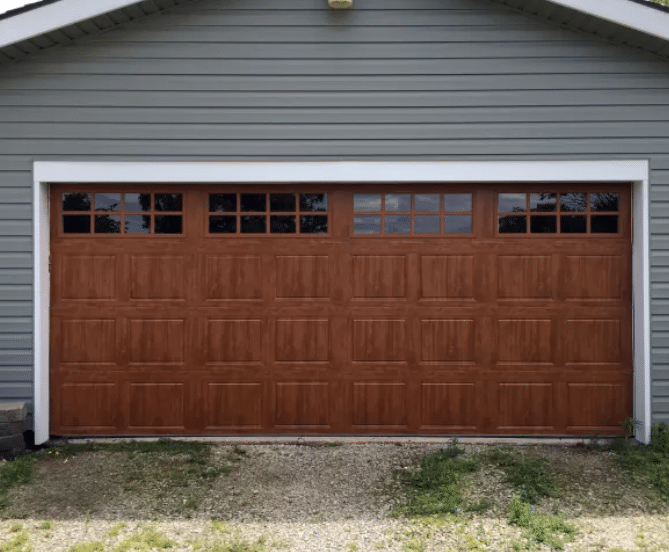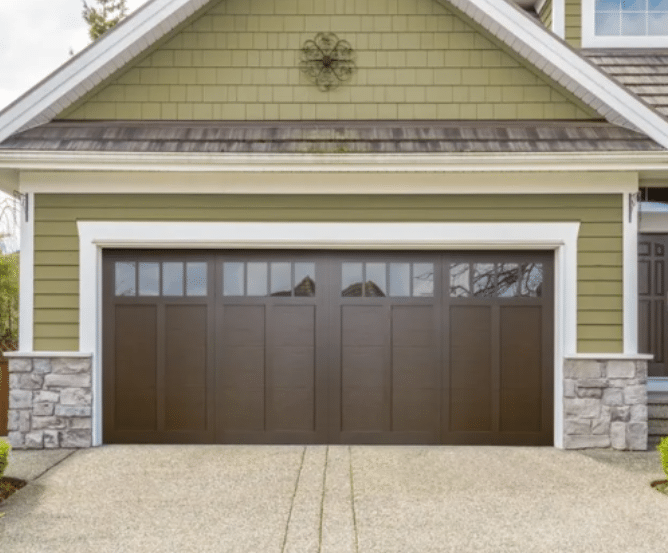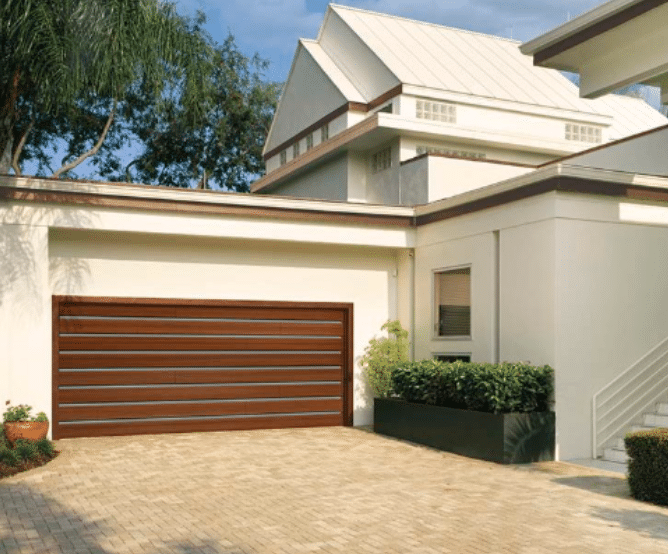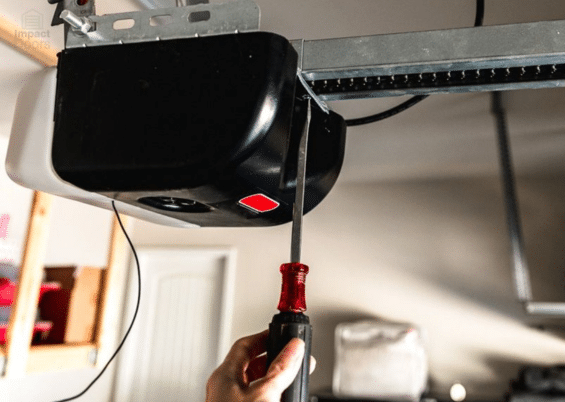Explore how wood grain garage doors combine curb appeal, durability, and cost-efficiency—and how to choose the right one for your home.
Wood-grain garage doors have emerged as a popular choice for homeowners who want the natural aesthetics of wood with improved performance and minimal upkeep. Thanks to advanced materials and finishes, today’s wood-grain doors are designed to emulate the texture and color of real wood, while offering improved durability and insulation.
Choosing the right garage door is more than just a visual decision. Homeowners need to consider how well it will perform under different weather conditions, how often it requires maintenance, and how the cost compares to alternatives. Wood grain garage doors offer a compelling balance of design and function.
In this guide, we’ll explore the essential features of wood grain garage doors. You’ll learn how to evaluate materials, finishes, insulation, and price points to find the best fit for your home. We’ll also discuss style options and upkeep tips to ensure your door performs well and maintains its appearance.
Why Homeowners Prefer Wood Grain Garage Doors
Authentic Appearance Without the Maintenance

Wood grain garage doors mimic the look of natural wood while using durable materials such as steel or composite. These doors are perfect for homeowners who want the texture and warmth of wood without the extensive upkeep real wood requires.
Versatile Designs for Any Home Style
From rustic charm to modern minimalism, wood grain doors complement a wide range of architectural styles. Whether your home features brick, stone, siding, or stucco, the door’s grain and stain can be chosen to match or contrast effectively.
Enhanced Durability and Weather Resistance
Unlike natural wood, faux wood doors made with steel or fiberglass resist warping, rotting, and insect damage. They’re built to endure years of exposure to sun, rain, and wind without degrading in performance or aesthetics.
Understanding Materials: Faux Wood vs Real Wood
Steel Doors with Wood Grain Finish
Steel doors with wood grain embossing are among the most popular choices. They provide high strength and excellent insulation. Advanced paint and stain techniques make the surface indistinguishable from real wood at a distance.
Fiberglass and Composite Doors
These doors combine low maintenance with high visual quality. Fiberglass skins are molded to resemble wood grain and placed over a steel or wood core. They are resistant to moisture and ideal for humid climates.
Real Wood Options
For those who value authenticity above all, real wood doors are available in species like cedar, mahogany, and redwood. They require regular staining or sealing to protect from moisture and UV rays, but deliver unmatched texture and depth.
Comparing Styles and Finishes
Popular Design Options
- Carriage House: Features cross beams and decorative hardware for a traditional look.
- Flush Panel: Sleek and minimal, ideal for modern homes.
- Raised Panel: Offers dimension and a classic appearance.
Color and Stain Choices
Wood grain garage doors can be stained to match dark walnut, golden oak, driftwood, or gray wash tones. Color-matching services allow homeowners to coordinate the door with trim, siding, or shutters.
Surface Texture Options
You can choose between smooth, brushed, or hand-hewn textures. Deep embossed finishes offer realism, especially on steel or fiberglass models.
Performance and Insulation
Thermal Efficiency
Insulated wood grain garage doors help regulate indoor temperatures, making them suitable for attached garages. Look for doors with polyurethane or polystyrene cores and a high R-value rating.
Noise Reduction
Thanks to their mass and insulation, these doors help reduce exterior noise. This is beneficial for homes near busy roads or in densely populated neighborhoods.
Wind and Impact Resistance
Steel-based wood grain garage doors are typically reinforced to withstand high winds and accidental impacts. If you live in an area prone to storms, check for impact-rated models.
Maintenance Expectations
Cleaning Tips
Wash the surface every few months using a soft sponge, mild detergent, and water. Avoid pressure washing, which may damage the finish.
Protecting the Finish
UV exposure can cause fading. Choose a door with UV-resistant coatings or reapply protective sealants every few years, especially in sunny climates.
Hardware Lubrication
Lubricate hinges, springs, and rollers annually to maintain smooth operation and avoid wear.
Cost Considerations and Affordability
Price Comparison
- Steel wood grain doors: Generally range from $1,200 to $3,500, depending on size and insulation.
- Fiberglass composite doors: Range from $2,000 to $4,000 with better durability.
- Real wood doors: Start around $3,500 and can go beyond $7,000 due to labor and materials.
Installation Costs
Professional installation may add $300 to $800, depending on the door’s weight, size, and opener system.
Long-Term Value

While real wood needs more upkeep, well-maintained doors can last 15 to 20 years. Faux wood models typically last even longer with minimal maintenance.
Eco-Friendly Considerations
Recyclable Materials
Many steel and composite wood grain doors are made with recycled materials. Ask your provider about eco-friendly options that lower your carbon footprint.
Energy Efficiency Ratings
Look for ENERGY STAR-rated models to reduce heating and cooling costs in adjacent rooms.
Sustainable Wood Sourcing
If choosing real wood, ensure it comes from sustainably managed forests and is certified by the Forest Stewardship Council (FSC).
Choosing the Right Installer
- Work with a company that offers multiple materials and finish options.
- Ask about warranties on both the product and the labor.
- Request examples from a gallery to visualize how styles will look on your home.
Frequently Asked Questions
What is the best material for wood-grain garage doors?
Steel and fiberglass offer the best balance of appearance, strength, and low maintenance. Real wood is unmatched for authenticity but needs more upkeep.
Do wood grain garage doors fade over time?
Yes, especially in areas with strong sunlight. Choosing UV-resistant finishes or reapplying sealants helps prevent fading.
How often do wood grain garage doors need maintenance?
Faux wood doors require light maintenance yearly. Real wood should be inspected and refinished every 2 to 4 years.
Can I paint over a faux wood grain garage door?
Yes, but preparation is essential. Clean and sand the surface lightly, then use high-quality exterior paint for best results.
Are insulated wood grain doors worth the investment?
Yes. They offer better temperature regulation, quieter operation, and longer lifespan, especially for homes with attached garages.
Conclusion
Wood grain garage doors offer the perfect balance of style, strength, and affordability for today’s homeowners. Whether you choose faux wood for convenience or real wood for character, these doors can significantly elevate the design of your home while improving function and value.
Before purchasing, evaluate the options available in your local area. Compare material types, maintenance needs, insulation, and finishes. Consider your climate and usage patterns to find a door that will serve you well for years to come.
Priority Doors and Gates can guide you through every step of the process, from style selection to installation and maintenance. Contact us today to get started.
End Note
Priority Doors and Gates delivers expert garage door services for residential and commercial properties across Hesperia and surrounding areas. We’re committed to providing long-lasting and stylish solutions.
We encourage homeowners to explore our residential services or get a fast response for any garage door repairs. Our team is also experienced with garage door panel repairs and garage door installation.
From commercial installations to elegant garage doors, we offer options to suit every property. Check out our client reviews or prequalify for financing now. Need directions? Find us easily using our Google Maps listing.




